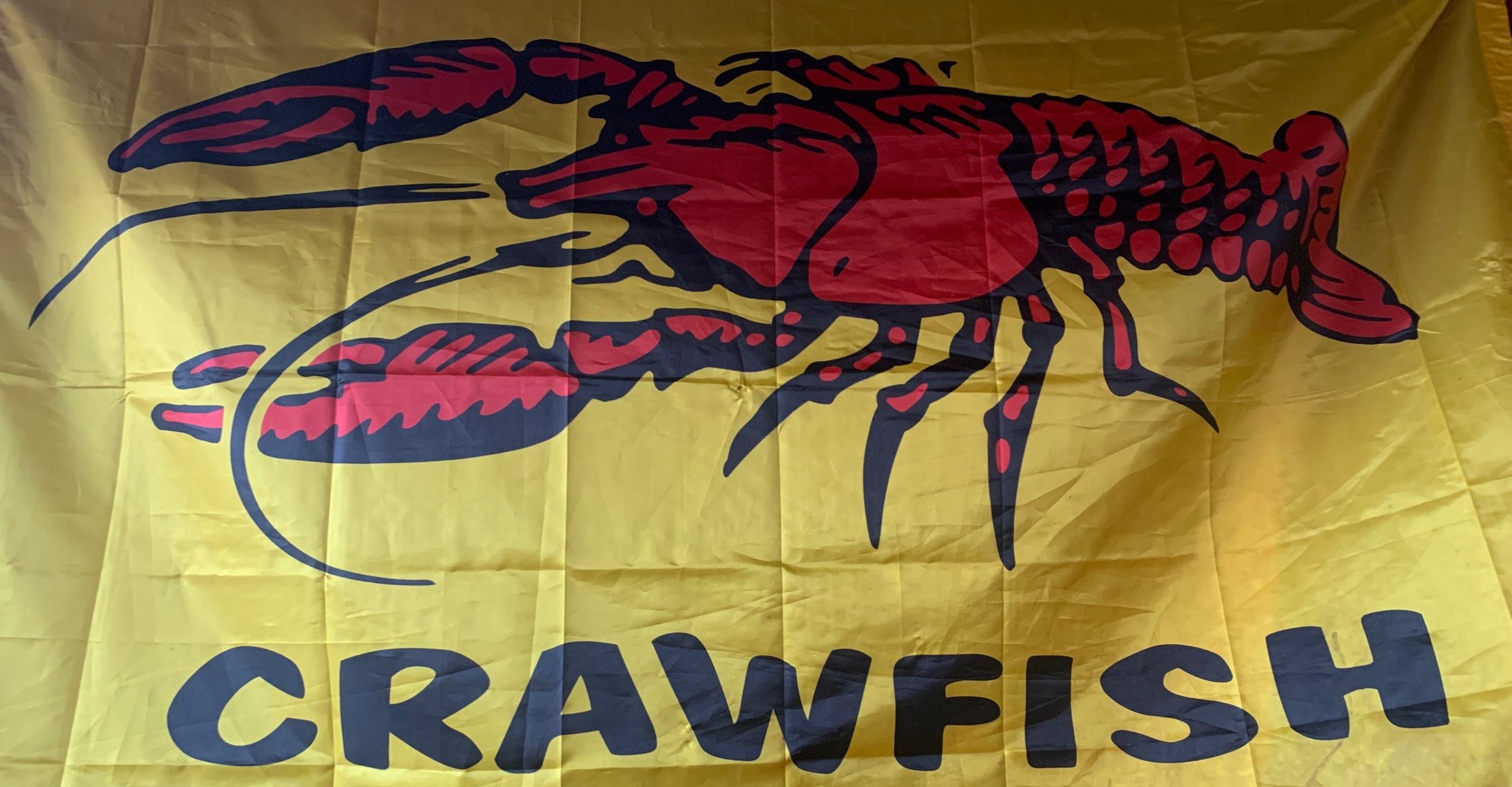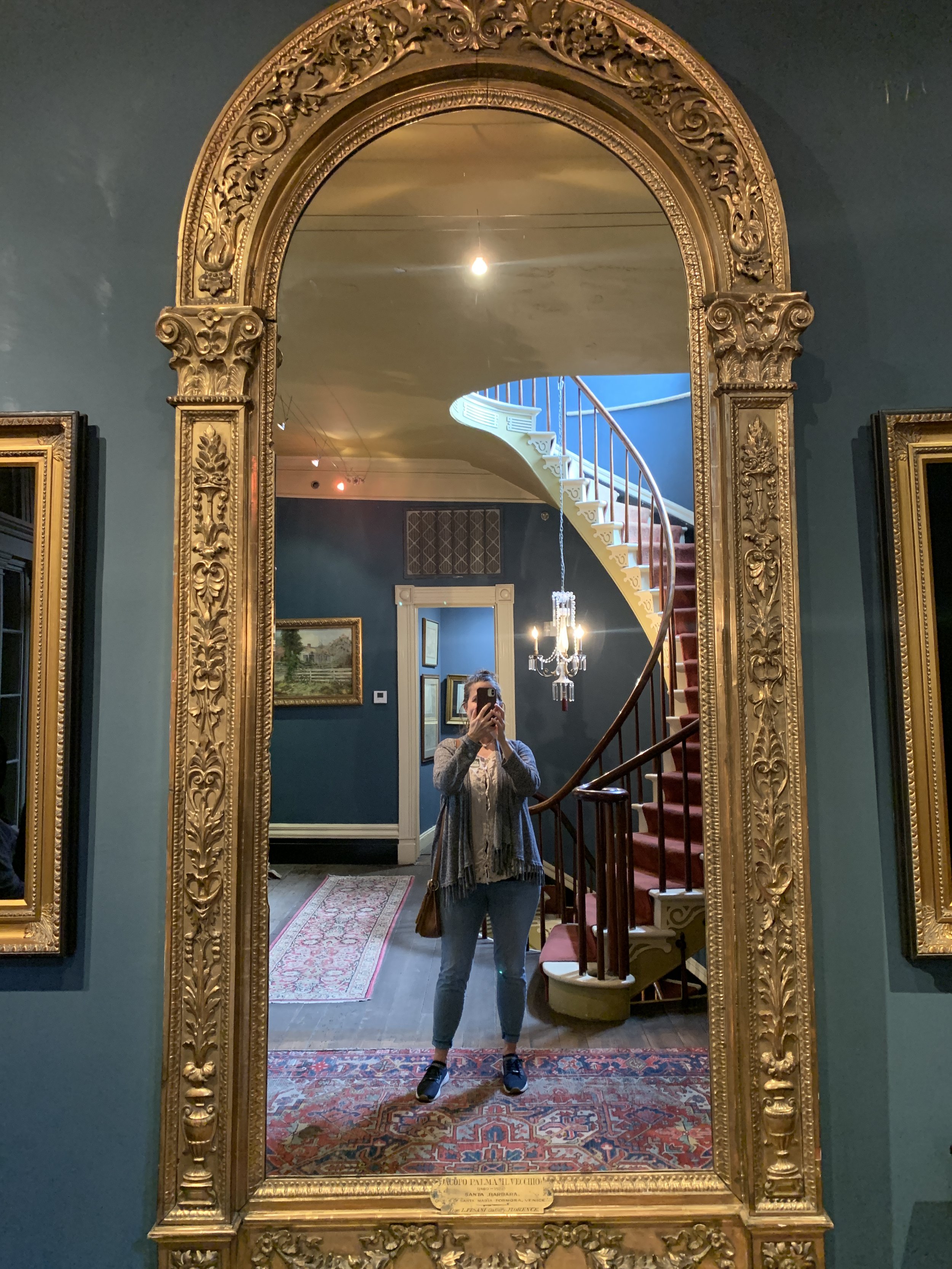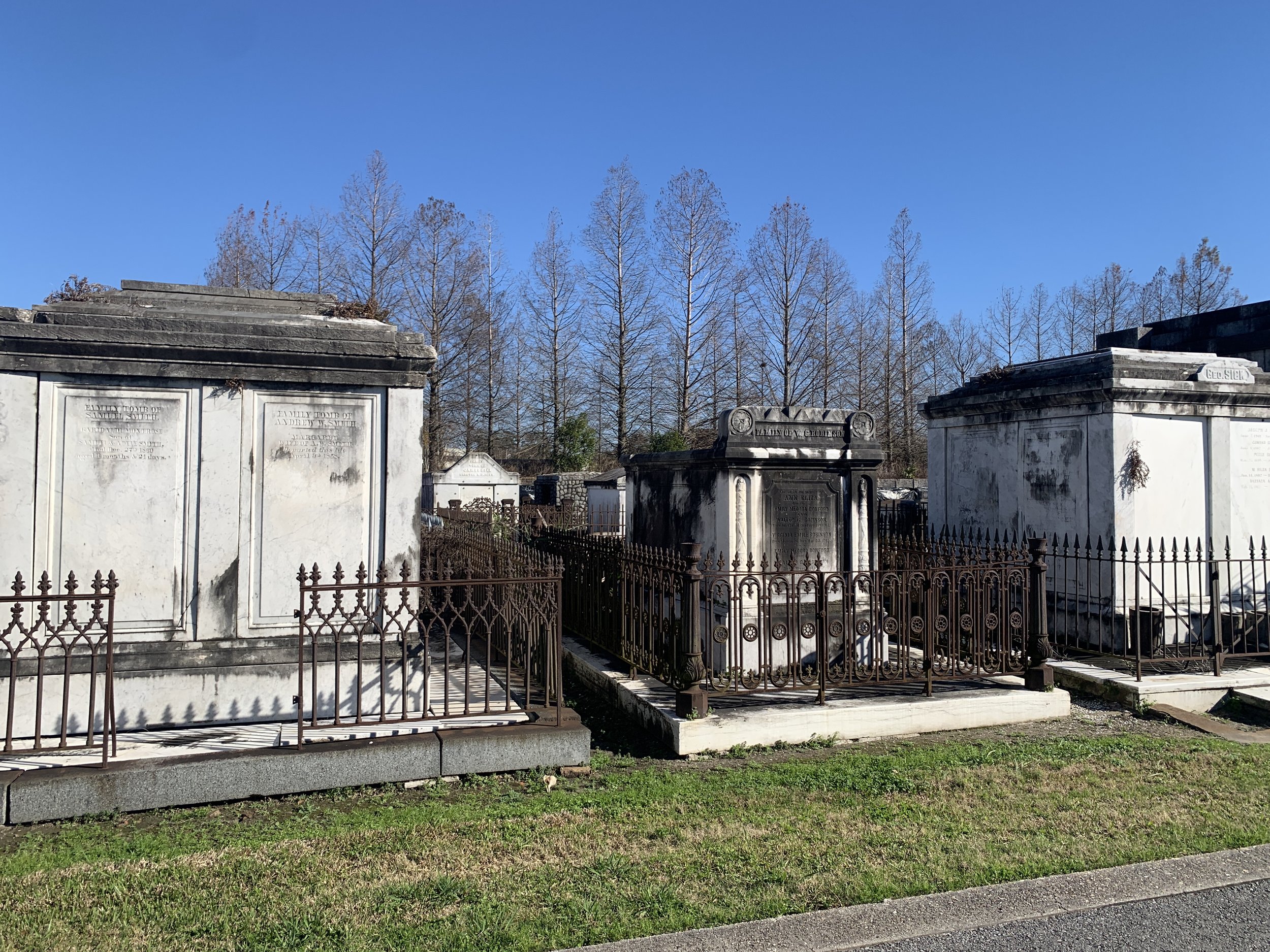Louisiana’s history is both historically culturally rich and sadly tragic. Spanish, French, African, and Native American influences are intertwined in the food, music, architecture, and language. The colorful culture is preserved within strong Creole and Cajun traditions alongside appalling stories of slavery. We spent some time: learning about plantation life, trying local delicacies, exploring New Orleans, checking out alligators, and listening to a bit of Jazz.
Our first stop - Rosie Jo’s - for some traditional Cajun fare. Steve had the Crawfish étouffée and I went for the Shrimp Po’ Boy.
As ugly as some history has been, my hope is always that knowledge for a better future can be learned from the past. With its plantation economy, Louisiana was a state that generated wealth from the labor and trade of enslaved Africans. We decided to visit two plantations, both very different in architecture, but with the unfortunate commonality of past of slavery.
Kent Plantation House is the oldest standing structure in Central Louisiana and currently located in Alexandria in Rapides Parish. The original home, moved to its present site in 1964, was filled with artifacts from the plantation’s time of operation. Built in circa 1796 by enslaved people this was an authentic Creole plantation that gave some insight to southern plantation life between 1795 and 1855. Seeing the preserved opulence and wealth of the plantation created by the unimaginable history of slavery was overwhelming to me. The stark contrast of those living and working on this plantation can be seen in the photos below.
Houmas House, referring to the native Houma people who once resided in the New Orleans area, possibly had a different story. Located in Darrow, just outside of New Orleans, this sugar planation once had the largest number of enslaved individuals in Louisiana - almost one thousand.
Houmas House Plantation - Antebellum architectural homes were built in the southern American states around thirty years prior to the American Civil War; approximately between the 1830s to 1860s.
Check out Steve playing the 1901 Baby Grand Steinway at the Houmas House! https://youtube.com/shorts/PNnW85AXCnc?feature=share
Our tour guide stated that John Burnside, an Irish businessman: purchased the already established Houmas House Plantation in 1857, freed his slaves in 1858 prior to the Civil War, gave them parcels of land to own, and started to pay for their work. John Burnside was nicknamed “The Sugar Prince” having eventually attained the largest sugar empire in the South. It has been written that he was among the first former slaveholders to continue his sugar business through paid labor.
I felt emotional upon leaving Houmas House with the knowledge that perhaps in this instance, at this plantation, the chains of slavery had been broken. I wanted to confirm the story and after some research it appears little has been written about this event. Descendants of those previously enslaved still live on nearby land that was supposedly given to their predecessors by John Burnside.
On our way to New Orleans we stopped for some more Louisiana lunch fare. Unfortunately we missed the Jambalaya (all sold out at a Jambalaya restaurant?), but enjoyed tasty Rice & Beans and Gumbo!
New Orleans - We were beyond grateful to have a nearby Harvest Host that allowed for a three night stay in their parking lot, giving us time to explore New Orleans. The food and beer at Faubourg Brewing were icing on the cake! We had an amazing time exploring the city; Cafe Du Monde for beignets and coffee, the Garden District, riding the streetcars, visiting cemeteries, and walking down Bourbon Street in the French Quarter..
The one item on my New Orleans list was to have beignets. There was no escaping the residue of powdered sugar all over, providing evidence that we devoured these yummy treats.
We began our New Orleans streetcar adventure to visit the Garden District - loaded with opulent historic mansions. I found a Garden District walking map via Google which helped with identifying some famous resident homes such as author Anne Rice and Sandra Bullock.
Author Anne Rice passed away from complications of a stroke at a hospital in Rancho Mirage, California on December 11, 2021, at the age of 80. She was to be interred at the family mausoleum at Metairie Cemetery in New Orleans. Her home is currently for sale in the Garden District.
We hopped onto another streetcar to visit cemeteries located just northwest of downtown. New Orleans is at or below sea level, resulting in a high water table in the soil. If a body or coffin is placed in an in-ground tomb in New Orleans, there is risk of it being water-logged or even displaced from the ground. For this reason, the people of New Orleans have generally used above-ground tombs. The graveyards are referred to as “cities of the dead.”
Katrina Memorial
The French Quarter - Fun times listening to some music and taking in the scenes of Bourbon Street. We left before the nocturnal party shenanigans started, although didn’t escape a stranger from throwing those colorful plastic beads around our necks!
On our final day in New Orleans we took a swamp tour to check out some local wildlife. We did not have high hopes for seeing alligators due to the chilly weather, but luckily there were a few out and about. Funny tour guide stories, a few Snowy Egrets, raccoons, and wild boar rounded out the tour!
We had a busy stay in Louisiana before heading on to our next destination, Florida. I have been waiting ten months to hug my youngest son living in Tampa! Before arriving we first had to drive through Mississippi. We did not stop, but Steve caught a photo of the sign. Thanks everyone for following along :-)
Coddiwompling “To Travel in a Purposeful Manner Towards a Vague Destination”
“Abandoned residential homes are common in the area—often the casualties of severe damage from hurricanes—but what I find fascinating is the mettle of the Cajuns we encountered and befriended. They may lose their roof and be forced to abandon their home, but it is a near surety that they will remain in the same area, raising a family. There is great cultural pride in these resourceful people, and it is evidenced by the tenacity of those who face the power of Gulf hurricanes every year, and yet remain.” -Mike Correll, Abandoned Sulphur, Louisiana
“I guess I feel that I was following my instincts, and at the same time being guided by the best. I became totally intrigued with Louisiana - the people, the food. It is a part of my life. Everything that has happened for me since moving here has just been icing on the cake.” -Emeril Lagasse
“Half of my family has a deep-rooted connection to the South and Louisiana, and for me, New Orleans is one of our most precious, historic communities: visually, emotionally, artistically.” - Sandra Bullock
Link to Steve’s music: https://open.spotify.com/artist/4fW5lsWiZG5TcOlhukK4pu?si=2NngXMjoR7mUJLreexbIAw&utm_source=native-share-menu (Let me know if you are interested in purchasing a CD/$10)



































































































